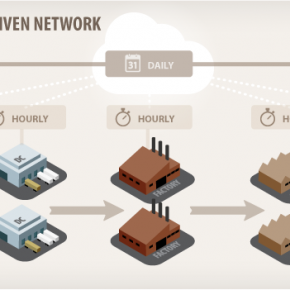This post has already been read 24270 times!
 I really enjoyed reading Lora Cecere’s recent post, “I am a supply chain zealot”, where she shares four concepts core to building an end-to-end value network. Like Lora, I’ve spend my life building more efficient supply chains, and I too am passionate about a subject that for most people is an afterthought. So yes, you can call me a zealot.
I really enjoyed reading Lora Cecere’s recent post, “I am a supply chain zealot”, where she shares four concepts core to building an end-to-end value network. Like Lora, I’ve spend my life building more efficient supply chains, and I too am passionate about a subject that for most people is an afterthought. So yes, you can call me a zealot.
We both believe better supply chain practices can improve our world in dramatic ways. And yet, as Lora rightly notes, while the end-to-end supply chain dream has been around for decades now, by almost every measure progress has stalled. We also both agree that cloud-based technology provides a clear path forward. Yet Lora leaves unsaid the details of what this technology looks like. So what I’d like to do in my next few posts is take Lora’s four concepts to their logical conclusion. Of course, what follows are my own opinions only.
Lora’s first concept is that today’s “collaboration” is destroying value:
Most companies have made their own organizations more efficient (ROA), but they have not reduced inventories and they have pushed costs back in the supply chain on suppliers that are less able to bear them…Automotive is a perfect example of what not to do in building supply chain value. The automotive industry took an early lead in squeezing suppliers so hard that they created risk in the supply chain by creating instability. It was one of the issues of American automotive companies’ demise. Instead of pushing costs and waste backwards in the supply chain, companies should redesign for value-based outcomes….Please hear my plea: give the supply chain group the opportunity to redesign the value chain from end to end.
I completely agree. Being generous, in its best form “collaboration” today is a mere buzzword with little substance. At its worst, collaboration has actually created more risk and instability. What Lora’s post doesn’t explore however, is how to go about redesigning an entire value chain from end to end for productive collaboration.
In my view there is only one form of collaboration worth pursuing, and that is collaboration that centers on the end customer. It’s very simple: take end customer data, transmit it back to every member of the supply chain in real time, and package it in a way that allows them to make better decisions. This will eliminate the instability and risk that plague traditional supply chains. In the end, the success of every participant in a supply chain depends on whether the end customer is satisfied. So why not orient every participant toward the end customer?
For nearly every industry, the right customer data is available. And the right technology to makes sense of this information exists today. So what are we waiting for?
- Generative AI: Force Multiplier for Autonomous Supply Chain Management - May 23, 2024
- Top 5 Signs Your Supply Chain is Dysfunctional - August 19, 2022
- Why a Network Model Makes Sense for Automotive Suppliers - July 30, 2019